What Are Your Destination’s Main Attractors?
Attractions—people, places, things, and/or experiences (or as we often call them—attractors) are in the most obvious sense what attract visitors to your destination. Visitors value what the attractions represent and it "attracts" them to you. Being honest about and then leveraging your unique attractions gives your DMO the ability to motivate potential visitors to choose your destination over another as they make their travel plans.
By understanding the audiences prioritized in your destination's Marketing Action Plan, you will be able to more accurately align your communications processes (also prioritized during the MAP development process) with the attractors your destination has to offer. When you cross-reference this information with research and visitor data, you will often start to see patterns that will inform opportunities and strategies to lift up the attractors so that they appeal to the visitors who are currently visiting your destination and those who can be inspired to visit your area. Breaking target visitor audiences down further into personas based on their demographics, values and interests will help you continue to hone your marketing to most closely align and appeal to these more defined slices of your target audiences. And it should become more clear which attractions appeal the most to which audiences. As you dig in and take an objective look at the different attractors your destination has to offer, who they would appeal to and why, resources provided by The Global Sustainable Tourism Council (GSTC) can help provide a little clarity to this process:
![]()
Geophysical-Landscape-Aesthetic
Visitors who value the outdoors and natural attractions are drawn to those that fit in the geophysical-landscape-aesthetic category, including mountains, bodies of water, scenic views, volcanic activity, or even the Northern Lights. For instance, the 16th most-visited attraction in America, the Great Smoky Mountains National Park, attracted more than 9 million visitors last year.
![]()
Ecological-Biological
Those who value science and scenery enjoy attractions in the ecological-biological category, including any and all organisms, ecological events or processes, migration, and fossil remains. Examples include viewing as many as 300 different migrating bird species in Florida's Everglades National Park or exploring fossils at the Dinosaur National Monument on the border of Colorado and Utah.
![]()
Cultural-Historical
Sightseers who value history and art/architecture enjoy attractions in the cultural-historical category, including all human constructions, cultural expression, objects, and places. This includes San Francisco’s Golden Gate Bridge, which welcomes 15 million visitors annually—making it the 8th most visited attraction in the United States.
![]()
Recreational
Guests who value adventure and experiences prefer attractions in the recreational category, including all attractions built by humans for the specific purpose of entertainment or education, such as theme parks, gardens, sports fields, rides, zoos, museums, theatres, shopping, etc.
As you work on the required beliefs of your visitors and personas, remember that these beliefs are really about what the attractors you have represent, and why visitors would be attracted to them. Example: for their Recreational attractions, Disney embraces the magic of make-believe and fairy tales, using them to attract visitors who value a chance to leave real life behind and live in moments of magical experiences. Obviously many travelers from around the world are seeking this sort of attraction—Disney parks make up four of the world’s top twenty most-visited tourist attractions.
How To Identify Your Destination’s Standout Attractions
- Start a prioritized list of the attractions you have generally promoted more than others in the past. Intangible attractions should also be included—local eateries and breweries, arts and social ambiance all count as attractors. If visitors choose to spend time and money to experience something in your market, then that is an attractor.
- Look at your past research (or conduct new research) to see what resonates with current visitors. If you don’t have research, look at resources you already have at your disposal:
- Website analytics can show which attraction pages are visited most on your site.
- Social media listening/research via hashtags, social page comments, and keywords can provide anecdotal visitor evidence of which attractions are preferred.
- Tripadvisor reviews and rankings can help identify the top attractions in your destination.
- Data sets from Arrivalist can also provide a lot of context for what attractions visitors in your destination are coming for (and when, for how long, where those visitors are coming from, etc.)
- Work with the attractions you identify to understand their attendance patterns, ideal participants, etc., breaking out the out-of-town guests if possible.
- Compare the revenue generated by each attraction and the overnight revenue that each attraction has the potential to generate. Always remember: more revenue and more overnight stays mean more local revenue generated for your destination's economy.
If the above exercise doesn’t make your attractors clear—tangible or intangible—break your front-runners down a little further. Accessibility and capacity (ease of traveling to and inside the attraction for visitors) can affect the visitor count and the subsequent economic benefits of promoting certain attractors. For example, even though the National September 11 Memorial saw over 4 million visitors its first year, Central Park surpassed it with an average of 40 million visitors a year thanks to being 100 times the size. Drawing power should also be considered. Uniqueness, ticket price/value and experience can all affect the value of visiting an attraction. Define the attraction category and attach persona values to determine which aligns more with your DMO.
Examples of Main Attractions
Albany, Georgia
Using primary research and through a facilitated Marketing Action Plan (MAP), Albany’s main attraction was identified as the overall natural location and features, but that it was considered a little out of the way for some who would be attracted to these qualities. We took that negative and turned it into a positive with the positioning of: “Off the Beaten Path”. Approaching what some might consider to be a negative and pairing it with various headlines to communicate the relaxed, “geophysical-landscape-aesthetic” and “cultural-historical” attraction-filled city.
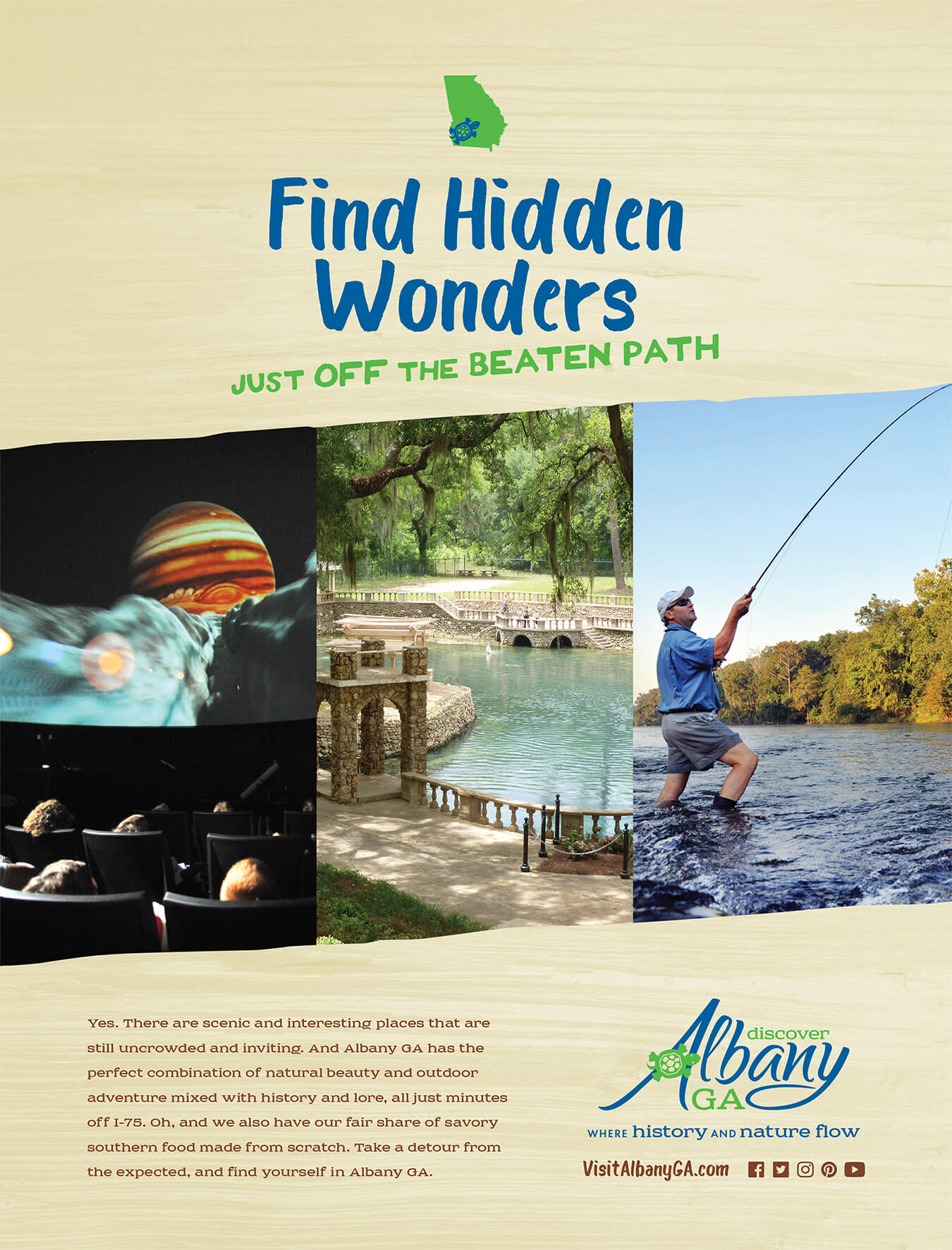
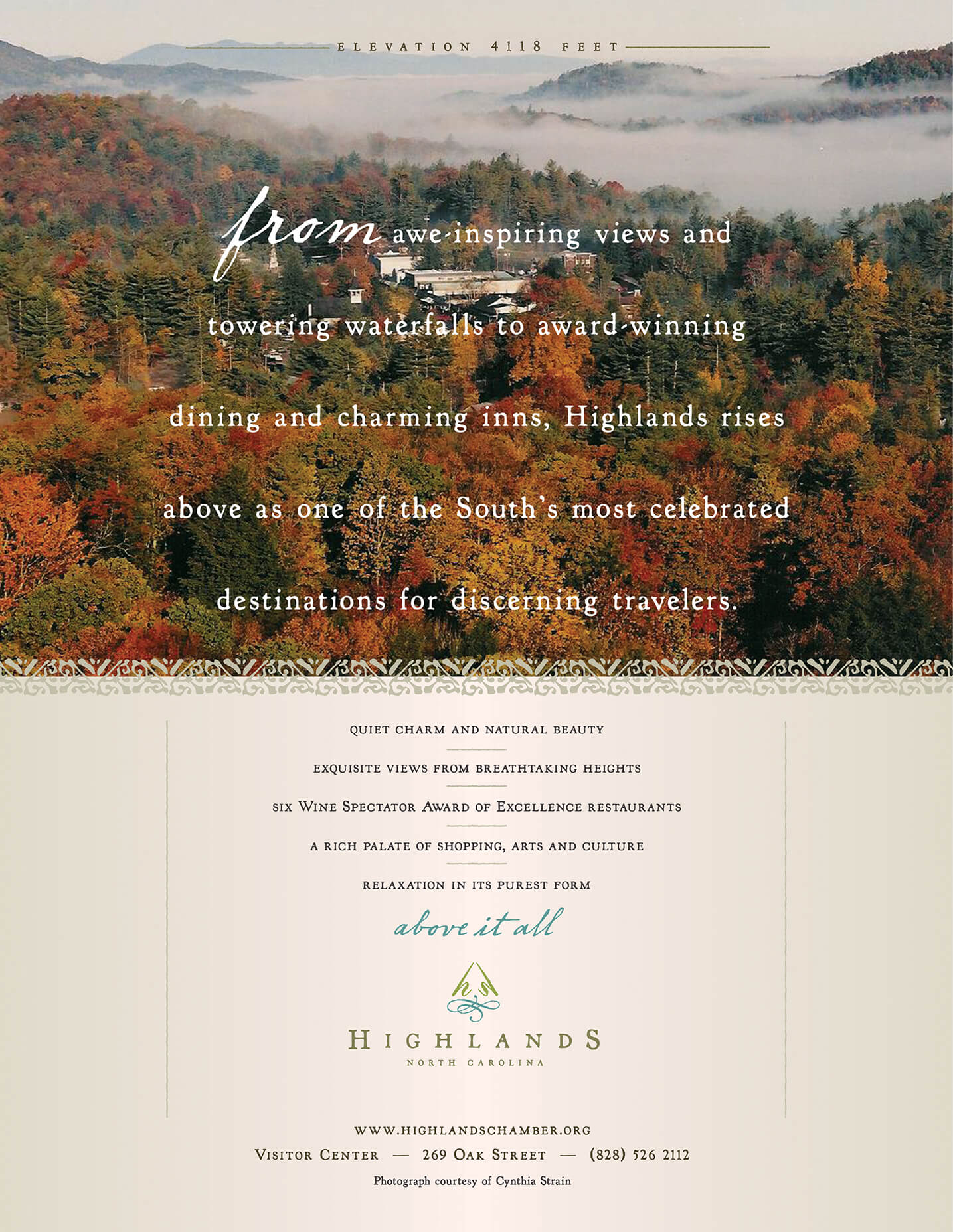
Highlands, North Carolina
Stamp gathered available research and facilitated the development of a Marketing Action Plan (MAP) for Highlands that led to a brand identity and the positioning statement “Above It All”, which targeted both the visitor and the Highlands resident who value views, scenery and higher-end destinations. Because peak season was already too crowded, marketing efforts undertaken for Highlands targeted potential shoulder season visitors. Utilizing our strategic recommendations, the Tourism Board also created several intangible “recreational” category attractions to draw additional off-peak visitors.
Tifton, Georgia
Visitor attendance and other insights presented Tifton as an agritourism destination and helped determine the “cultural-historical” Georgia Museum of Agriculture and Historic Village as one of its main attractions. The museum is very accessible, large, family-friendly, and considered a very good value. Custom photography from the museum's historic village steam locomotive attraction is featured on the visitor guide, website and print ads along with copy that appeals to the category’s values.
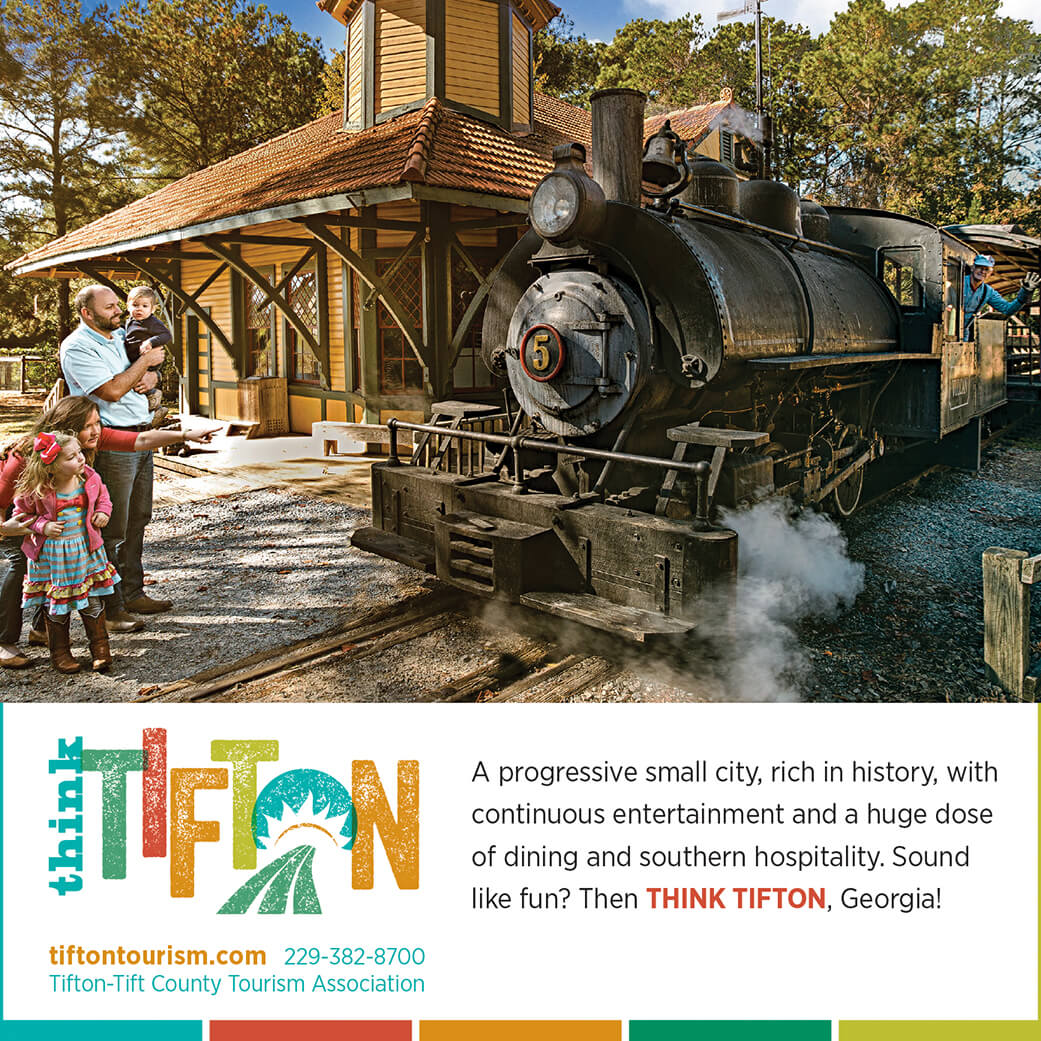
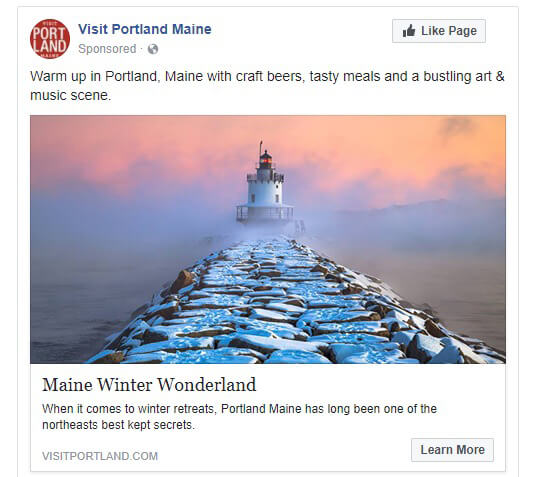
Portland, Maine
As we developed a comprehensive Social Media Action Plan, we utilized research to define the personas of the people who visit Portland. They fell in line with both the cultural-historical category and the recreational category. Its defining attractions are the food and beverage scene (lobster and craft beer, specifically) as well as the coastal scene (the lighthouses, specifically). Interspersed evenly and with a complementing category set, their social media feed features a variety of food and libation offerings as well as coastal photography to complement other area attractions like tours, nightlife and the arts.
Dauphin Island, Alabama
After the MAP development process, we were able to achieve unanimous stakeholder consensus that Dauphin Island offers an authentic taste of the beautiful Gulf Coast and that it falls in the “geophysical-landscape-aesthetic” category. No glitz or glamor. Just a lot of tranquil beauty, rich with history where ecotourism drives the local economy. We rebranded the town as the Sunset Capital of Alabama with a complimenting logo and used a more up-to-date and appropriate brand voice that sets Dauphin Island apart from other nearby competition on Alabama, Florida and Mississippi beaches. Embrace who you are, and don’t be afraid to champion your lesser-known, exclusive experiences as compared to other DMOs.
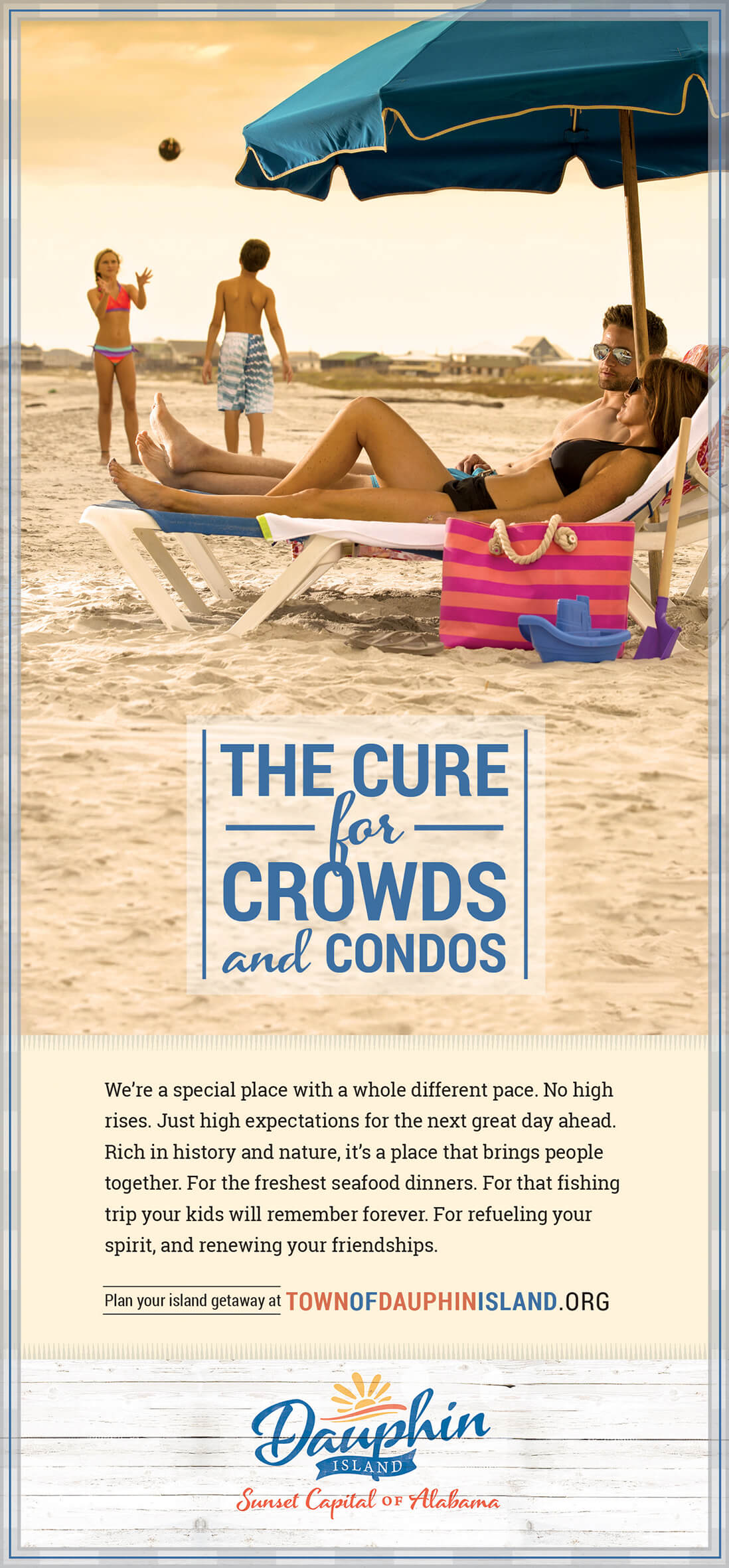
Once you have identified your most MVAs (Most Valuable Attractors) be sure to gather photos, videos, visitor testimonials, audio, and even virtual reality experiences to demonstrate the outstanding features of these attractions in your promotional efforts.

